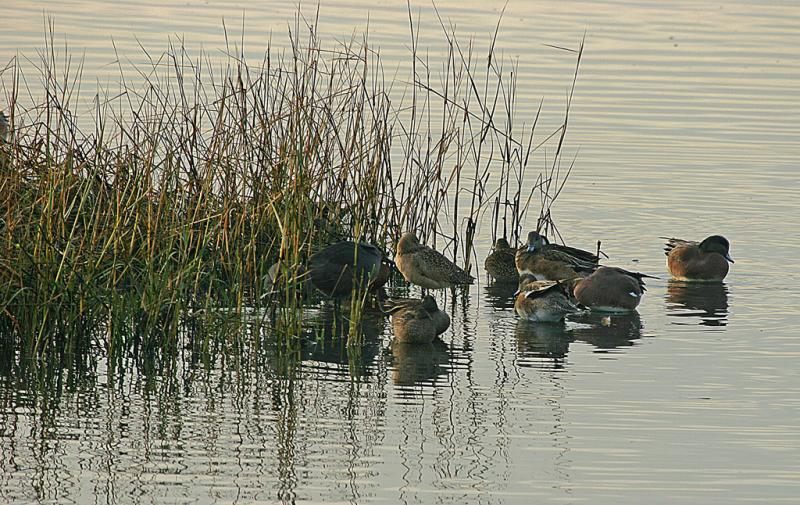Wetlands are some of the most productive wildlife habitat in the world, and there are all types of wetlands. Not only do certain types of wetlands provide for breeding and nesting grounds, but ponds — classified more as deepwater wetlands — throughout the United States serve as wintering habitat for migrating and over-wintering ducks and geese. Though many ponds do not provide great waterfowl habitat, there are some pond management techniques that you can implement to enhance your pond or small lake.
First, start by selecting areas for pond consruction with existing shallow flats or construct shallow areas around existing ponds. This will benefit wetland plants and provide feeding areas for ducks and geese. Another wetland management practice you can implement would be to install a water control structure to allow for water manipulation. A structure will allow you to trap rainwater during the fall, winter, and early spring. Water more than 8-inches in depth can be left for fish and livestock watering.
Another management practice that will benefit your pond is to disk the shallow end of the pond when the edges dry up. This turns over the soil and stimulate the germination of weedy plants — referred to as forbs. Forbs create large seeds, which are great waterfowl food. Also, leave a minimum 50-foot wide strip of natural and planted tall grasses around the permiter to provide nesting habitat for ducks and to serve as brood rearing habitat. Even the southern U.S. has ducks that nest during the spring. These include mottled ducks, whistling ducks, wood ducks, mallards, and blue-winged teal.

Lastly, trees such as nuttall oak, willow oak, water oak, green ash, and bald cypress may be planted in some cases to improve wetland habitat. Make sure to plant at a rate of about 200 to 500 trees per acre, but keep in mind that you probably will not plant but a very small amount of acreage. These tree species are great because they produce good mast (seeds) for ducks, just make sure to use best pond management practices and keep trees of pond and lake dams.
In summary, there are many things a pond owner can do to provide better wetland habitat for resident and migrating waterfowl. These listed wetland management practices will take some effort, but they are relatively easy to implement and can be decades of productive pond management for waterfowl. And you’ll have excellent duck hunting, too!
One of my uncle has many ponds spread over 40 acres. These ponds can be one of the best places for wintering waterfowl.